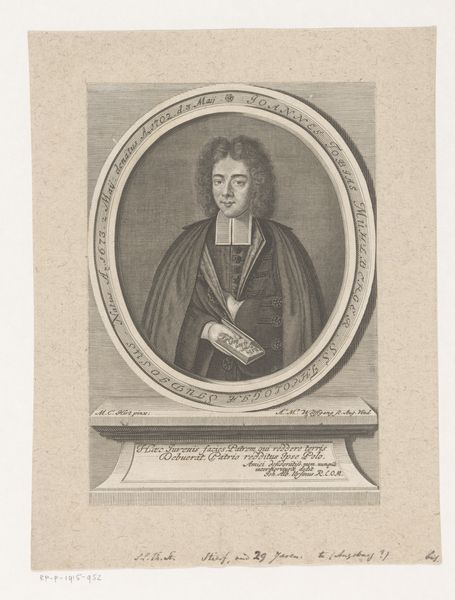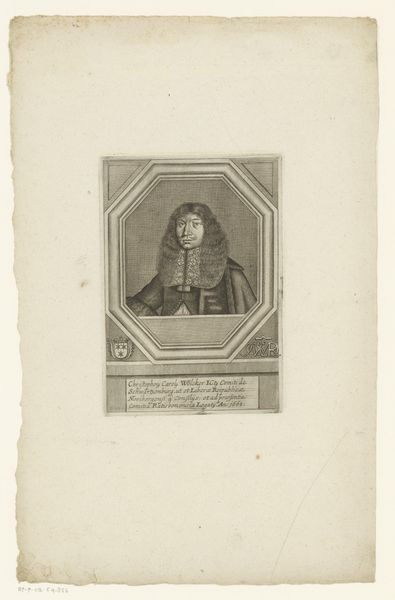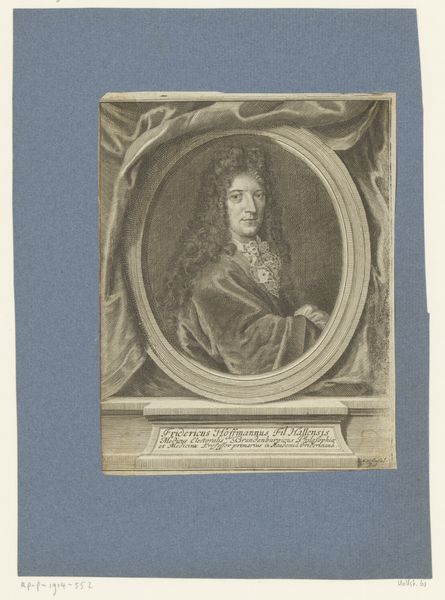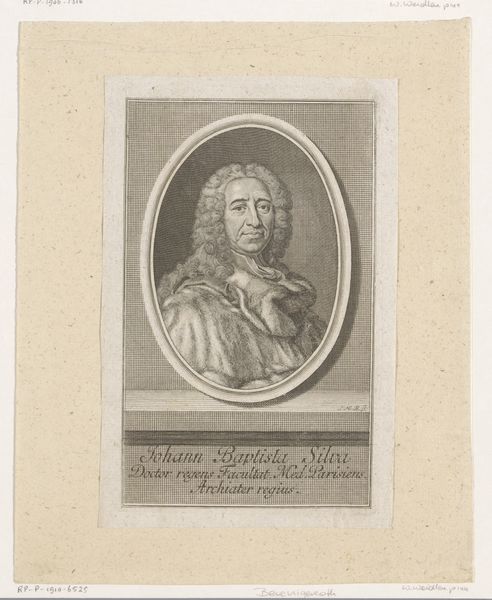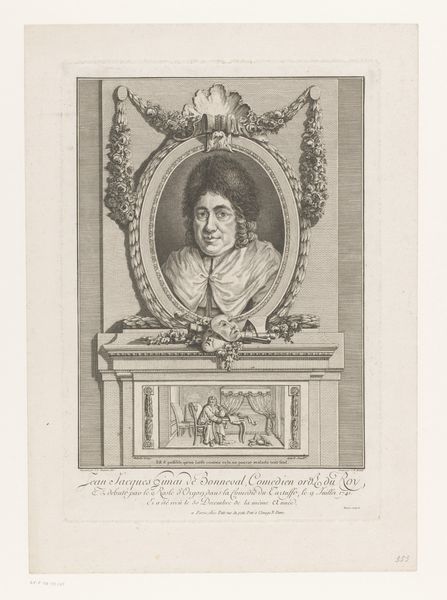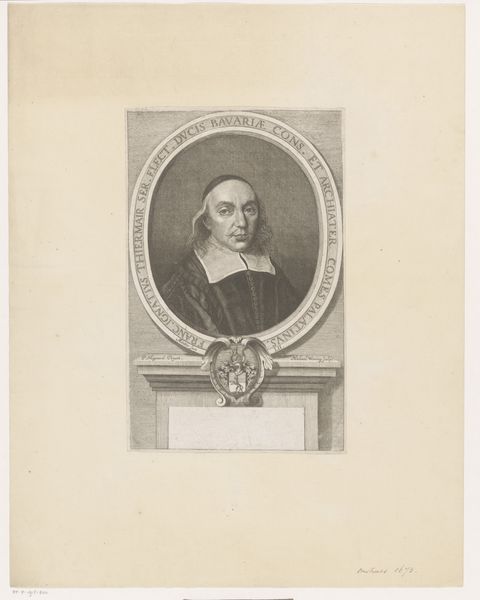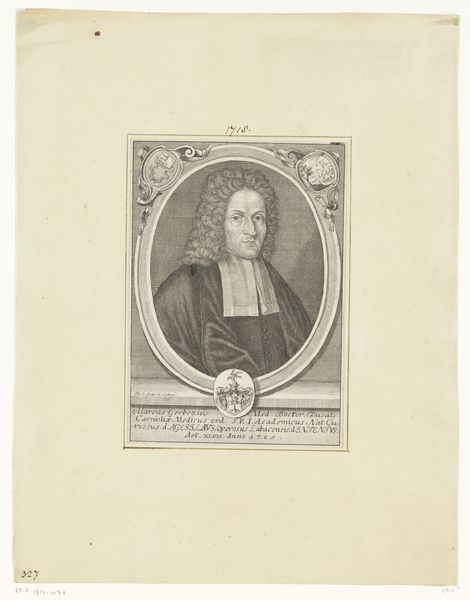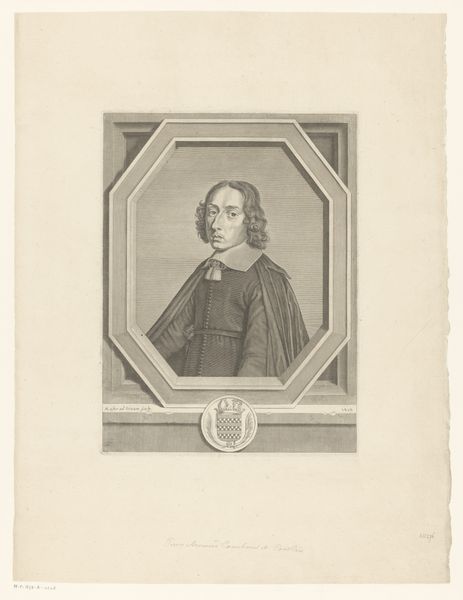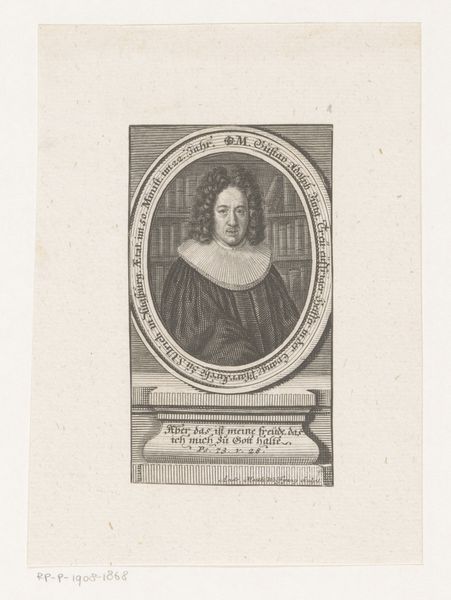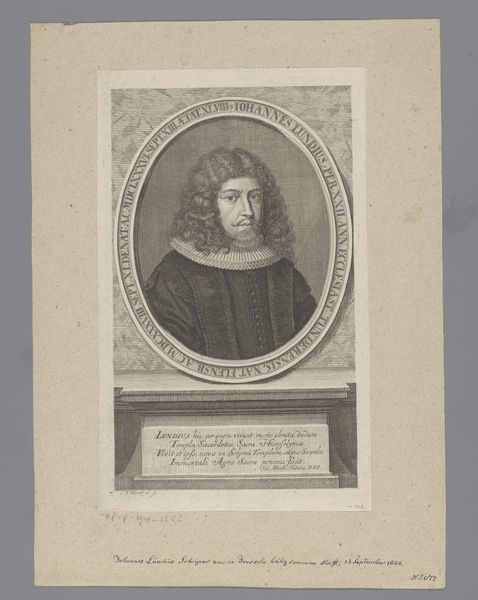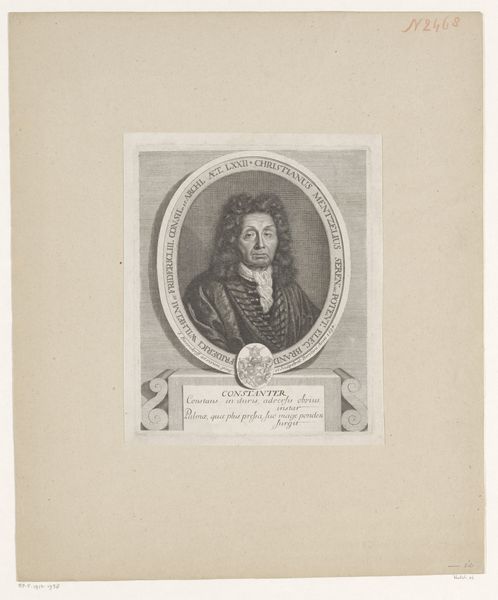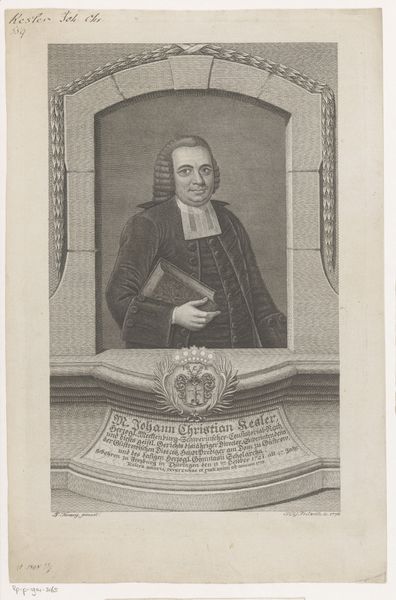
print, engraving
#
portrait
#
baroque
# print
#
old engraving style
#
pencil drawing
#
history-painting
#
engraving
Dimensions: height 327 mm, width 207 mm
Copyright: Rijks Museum: Open Domain
Curator: Here we have Francesco Zucchi’s print depicting "Portret van graaf Francesco Mezzabarba Birago," placing the Count within a Baroque sensibility sometime between 1702 and 1764. What are your initial thoughts? Editor: It's striking, in that understated, poised way you find in formal portraiture. There's something both elegant and weighty in its presence, and a tangible sense of social power at play, which also brings me to wonder who it might exclude? Curator: A crucial question! Consider how engravings were reproduced—often through laborious, skilled artisan work in workshops—before reaching wider audiences beyond the immediate aristocratic circles, reflecting a different kind of labor from that of the celebrated painter. Editor: Exactly. The very act of distribution through print carries social and political implications, extending the Count's influence but also potentially democratizing his image, albeit in a carefully managed way. His gaze, directed at us, invites a negotiation with authority, power, and possibly even an indirect plea to justify his position within the era’s class structure. Curator: The materiality of the print further emphasizes this paradox: mass-produced yet reliant on significant manual skill. Also the visual vocabulary is telling, think of the textures carefully rendered to evoke wealth and status! The quality of line and shading communicates specific material properties: from velvet to lace, it suggests a meticulous engagement with fashion as material culture. Editor: Absolutely. The clothing itself speaks volumes about identity and belonging during that period. One almost feels encouraged to examine how such performative aspects of attire reinforced or challenged social hierarchies of gender, class and political allegiance in that specific era. We may further scrutinize Zucchi’s decisions around how those attributes are presented. Curator: Right! These printed portraits allowed for dissemination of sartorial and behavioral ideals, potentially sparking dialogues about gendered expectations within various segments of society... Editor: In a sense, this seemingly formal, straightforward portrait becomes a locus point for exploring broader tensions within a hierarchical society in transition. Curator: Indeed. It brings into focus the social forces constantly shaping not only the man within the image, but the material conditions through which the image itself came into being. Editor: Leaving me pondering the extent to which the work subtly reinforces but also challenges the very foundations of class itself!
Comments
No comments
Be the first to comment and join the conversation on the ultimate creative platform.

